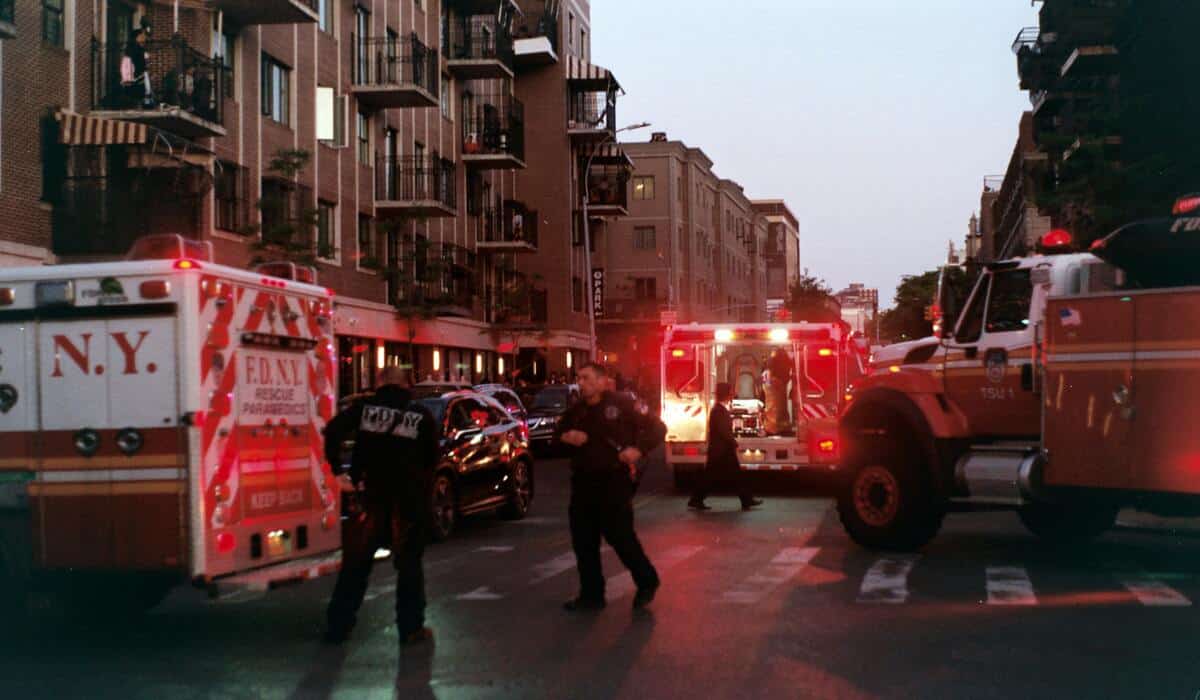Table of Contents
Every year, thousands of pedestrians fall victim to traffic-related accidents, with many incidents resulting in serious injuries or fatalities. Despite the protective measures and regulations in place, pedestrians remain highly vulnerable in comparison to shielded motorists.
This blog post explores the prevalent causes of pedestrian accidents, aiming to enhance awareness and advocate for stronger safety practices on our streets. By understanding these causes, both drivers and pedestrians can contribute to a safer environment for everyone.
Understanding Pedestrian Accidents and Risk Factors
Pedestrian accidents can occur in various scenarios, such as when crossing busy intersections or walking along roads without sidewalks. Key factors that elevate the risk include age, with children and the elderly being particularly vulnerable, and environmental conditions like poor lighting or adverse weather. Time of day also plays a significant role; dusk and dawn see a higher rate of incidents due to decreased visibility.
It is crucial for both drivers and pedestrians to be highly vigilant. Enhanced awareness can significantly reduce the risk of accidents and promote safer navigation through shared spaces. This mutual understanding is the foundation of preventive measures that can protect lives and maintain public safety.
Driver-Related Causes of Pedestrian Accidents
Distracted Driving: The rise of smartphones has significantly increased the instances of distracted driving. When drivers text, talk, or use apps while operating a vehicle, their attention is divided, dramatically elevating the risk of not noticing pedestrians in their path.
Speeding: Driving above the speed limit or too fast for conditions reduces a driver’s ability to react to pedestrians. This is particularly dangerous in urban areas where crosswalks are frequent and expected.
Failure to Yield Right of Way: Many accidents occur when drivers do not adhere to the laws requiring them to yield to pedestrians at crosswalks and intersections. This oversight is especially hazardous for those who are less visible or slower moving, such as children or the elderly.
Impaired Driving: Alcohol or drug use impairs a driver’s reaction times and decision-making abilities, making it harder to navigate pedestrian-rich environments safely.
Turning Accidents: These accidents often happen when drivers make turns without properly checking for pedestrians crossing legally. The misjudgment in speed and distance can lead to severe accidents within crosswalks.
Addressing these driver-related factors is crucial in reducing pedestrian accidents. Simple actions like adhering to speed limits, staying alert, and respecting pedestrian right-of-way can save lives.
Pedestrian-Related Causes of Pedestrian Accidents
Distracted Walking
Engaging with mobile phones or other electronic devices while walking can significantly decrease a pedestrian’s awareness of their surroundings. This lack of attention makes it difficult to react promptly to potential hazards.
Jaywalking
When pedestrians choose to cross streets outside of designated crosswalks, they put themselves at greater risk. This practice often leads to unexpected encounters with vehicles, where drivers have less time to react.
Intoxication
Alcohol and drugs impair a pedestrian’s balance, coordination, and judgment, increasing the likelihood of stepping unpredictably into the path of oncoming traffic.
Low Visibility
Walking at night or in poor weather conditions without appropriate reflective clothing or lights makes it hard for drivers to see pedestrians. This significantly raises the risk of accidents, especially on poorly-lit roads.
Pedestrians can mitigate these risks by staying alert, using crosswalks, and ensuring they are visible to drivers at all times. Personal responsibility plays a crucial role in reducing the incidence of pedestrian accidents.
Staying Safe as a Pedestrian
- Use Designated Crosswalks: Always cross streets at marked crosswalks or intersections where drivers expect pedestrian traffic and are more likely to slow down. Wait for the signal and watch for turning vehicles to ensure it’s safe before you cross.
- Maintain Awareness: Avoid distractions like smartphones and headphones while navigating streets. Keeping your full attention on your surroundings is vital for spotting potential dangers in time to react effectively.
- Make Eye Contact with Drivers: Before crossing, make eye contact with drivers to confirm they see you. This simple act can prevent many accidents by ensuring that drivers are aware of your presence.
- Obey Traffic Signals: Adhere strictly to pedestrian signals at intersections. Crossing against a red light not only increases the risk of accidents but also sets a poor example for other pedestrians, especially children.
- Wear Bright Clothing at Night: Enhance your visibility after dark by wearing reflective clothing or using a flashlight. This helps drivers see you from a distance and react accordingly, reducing the likelihood of nighttime accidents.
By adopting these safety practices, pedestrians can significantly contribute to reducing their risk of accidents and ensure a safer environment for everyone on the road.
Enhancing Road Safety for Pedestrians
Understanding the myriad causes of pedestrian accidents is essential for fostering shared responsibility between drivers and pedestrians. By being aware of the behaviors that lead to these accidents, both parties can actively participate in creating safer roads. Drivers must remain vigilant, avoiding distractions and respecting speed limits, while pedestrians should utilize crosswalks, remain alert, and ensure they are visible, especially at night.
This awareness and proactive behavior are key to reducing the number of pedestrian accidents. Sharing this information widely can help raise awareness and promote pedestrian safety. Let’s work together to make our streets safer for everyone, reinforcing the importance of mutual respect and precautionary measures in traffic environments.


